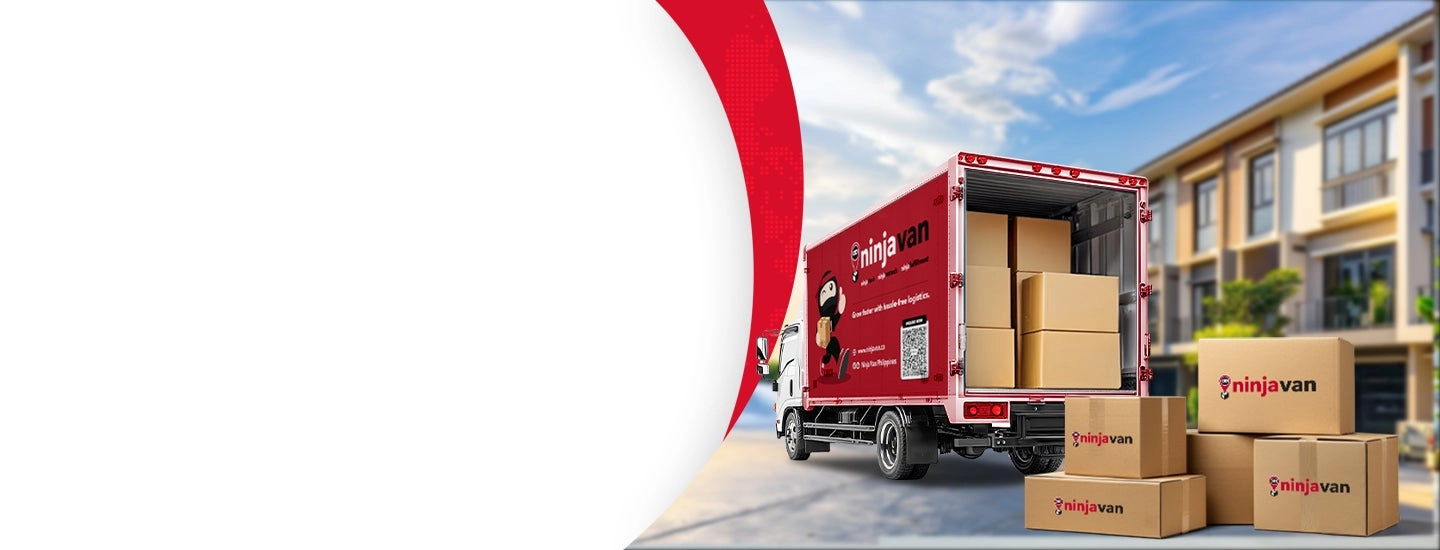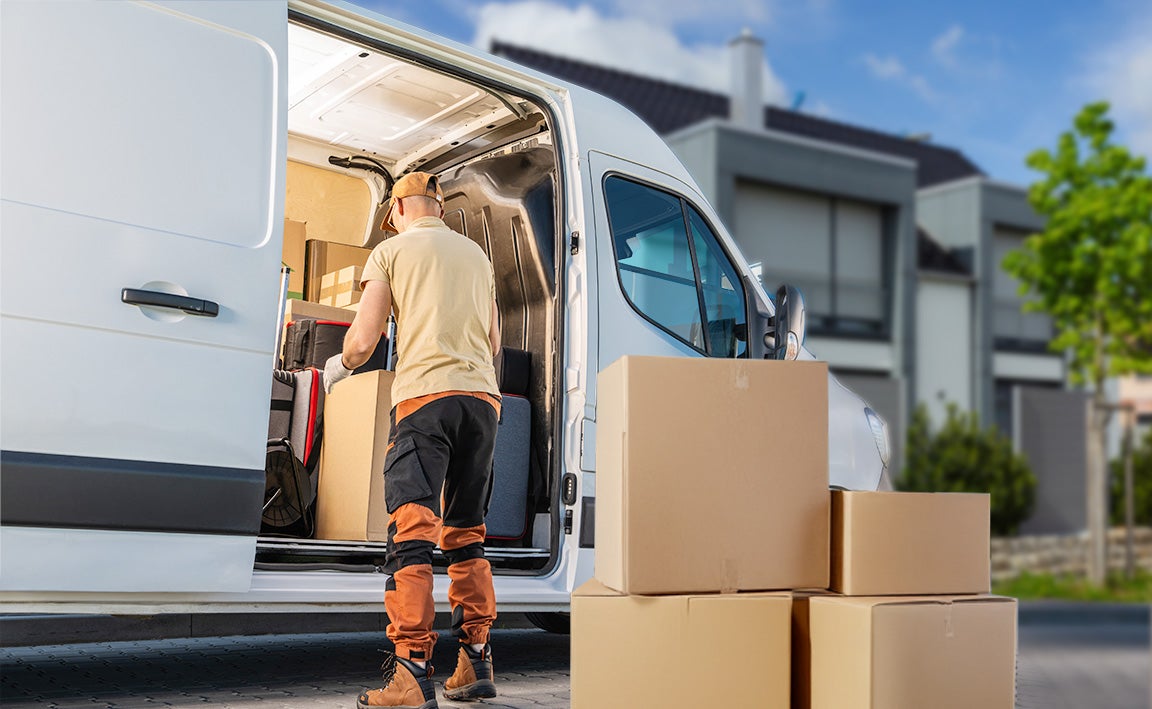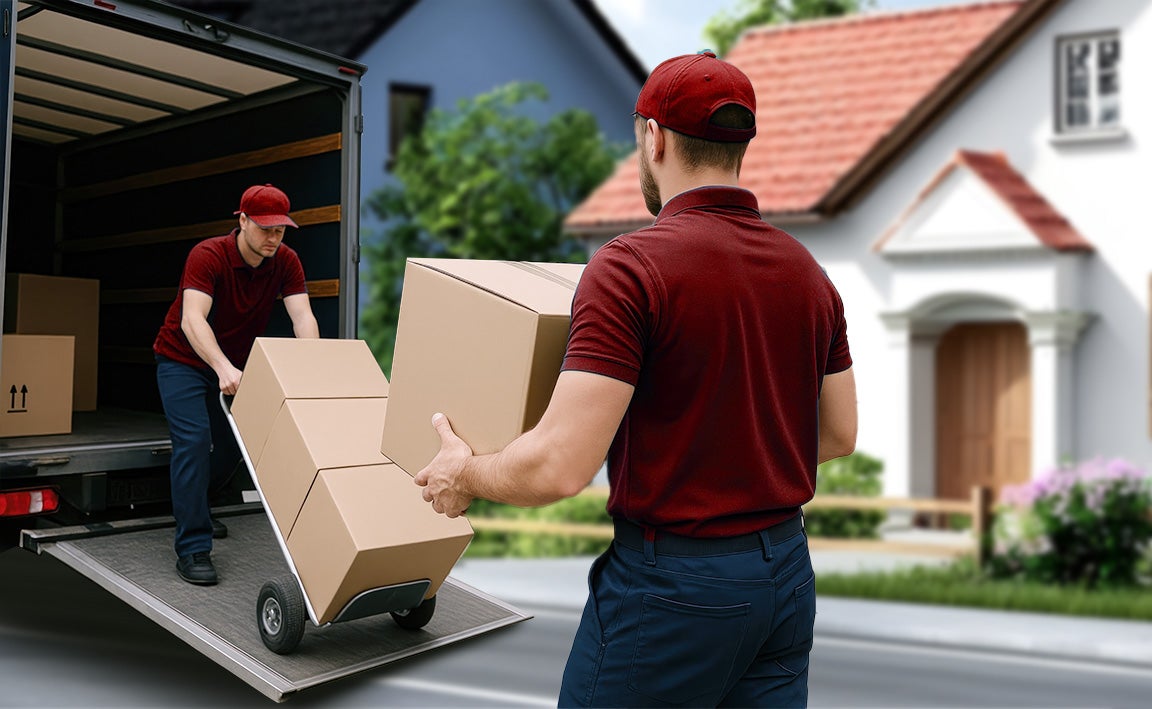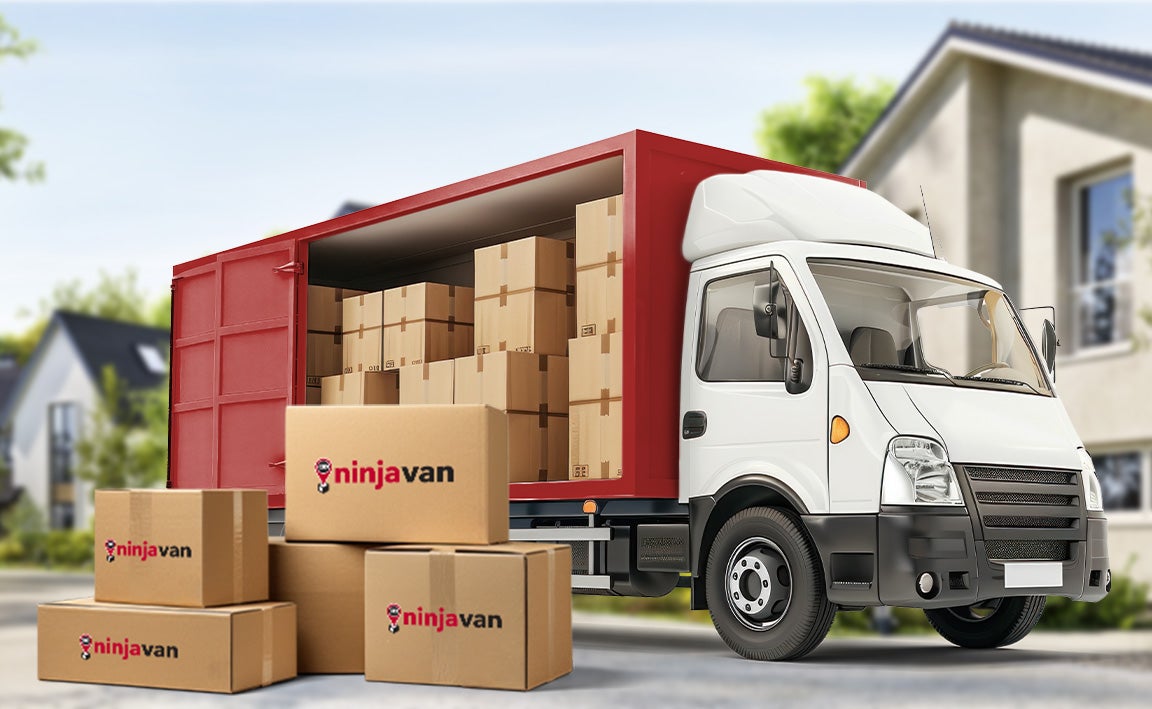Delivering Big: How Businesses Handle Last-Mile Logistics for Bulky Items
Delivering big items comes with challenges that can rapidly cut into profits when you're unprepared. Learn more in this guide!

Last-mile delivery is often the most critical and complex phase of logistics, especially when you’re moving bulky packages. Unlike small parcels, large goods demand specialized vehicles, expert handling, and well-coordinated scheduling to reach their final destination safely and on time.
For businesses in Metro Manila and the Greater Manila Area (GMA), the challenge grows even bigger with heavy traffic, narrow roads, and the need to deliver to retail outlets, warehouses, or clients across Luzon and beyond.
Getting the last mile right can mean the difference between satisfied customers and costly returns or delays. In this article, you’ll get practical insights and decision-making tips on how to stay in control of your large-item deliveries, every step of the way.
Common Last Mile Delivery Challenges for Bulky Items

Delivering oversized products comes with unique hurdles—and the last mile is typically where issues can arise. Here are the specific challenges that make large-item deliveries especially difficult and costly without the right strategy in place.
Fragmented multi-package deliveries
When you’re shipping items like home gym equipment, nursery furniture, or large pet cages, orders often include multiple boxes or components. These fragmented deliveries can create fulfillment delays if they’re not consolidated properly. Imagine sending a barbell and power rack in three separate boxes, with one arriving later than the others.
Customers expect complete deliveries in a single trip, but coordinating this across different carriers or hubs can be a complicated process. Investing in more effective tracking and packaging strategies, as well as smarter load planning, prevents customer frustration and return requests caused by split deliveries.
Unrealistic free shipping expectations
Customers are used to seeing “free shipping” advertised on online stores, but that promise is much harder to sustain when you’re delivering a refrigerator or a drum kit. The expectation of free or ultra-low-cost shipping puts pressure on margins for sellers, especially when deliveries span Metro Manila or provincial routes.
The question is whether to absorb these costs, pass them on to customers, or develop pricing strategies that clearly set expectations about delivery fees for large items.
Inefficient truck space utilization
Unlike small parcels that can be easily stacked and packed, bulky goods take up valuable truck space if they’re not planned carefully. A truck delivering home appliances or automotive parts may reach its space limit long before its weight limit.
Inefficient loading results in more trips, higher fuel costs, and lower profitability per delivery. Solving this requires strategic loading, proper vehicle selection, and staff training in safe but space-efficient loading.
Unpredictable delivery times
Heavy traffic in Metro Manila and the GMA makes delivery times difficult to guarantee, especially as trucks carrying oversized items may require specific routing and clearance.
Additionally, unpredictable weather can completely disrupt schedules.
For brands in the premium segment, missing delivery promises can damage trust. Planning for local realities, utilizing route optimization software, and engaging in proactive customer communication are essential to managing expectations effectively.
Rigid and ineffective scheduling
Delivering big items requires customer coordination. Someone needs to be home, sometimes even ready to assist. Fixed or inflexible schedules frustrate customers who can’t easily adjust their day for an indefinite delivery window.
This is a big issue in the pet supplies and home appliance sectors, where missing the delivery window means rescheduling at significant cost. Ideally, cargo companies offer tighter delivery slots, real-time tracking, and customer-driven scheduling to improve success rates.
Expensive returns and reverse logistics
If delivering a bulky item is challenging, returning it is even more so. Customers may demand pickup for returns on baby furniture or heavy automotive accessories, but these reverse logistics trips are costly and logistically complex.
Damage during return transit is common, and reselling returned large items is significantly more challenging. There is a need to build clear return policies, pre-qualify customers to reduce buyer’s remorse, and invest in better packaging to minimize return costs.
Escalating operational costs
Fuel prices, staff wages, vehicle maintenance, and warehousing costs all increase when you’re delivering large items. Unlike small e-commerce parcels, you can’t just pile 100 orders into a van.
Each delivery needs more time, space, and care. Sports and fitness, as well as lifestyle and music retailers that handle large-item pickup and delivery, may see last-mile costs eating into profit margins. Careful pricing, bundling strategies, and working with efficient logistics partners are crucial for sustainability.
Challenging last-mile installations
Finally, delivery doesn’t end at the curb. Many bulky-item deliveries require in-home placement or installation, whether it’s setting up a home gym or installing an oven. Poor unloading can also ruin the overall delivery experience, even if the item itself arrives on time and is undamaged.
Coordinating skilled crews, ensuring safety, and managing customer satisfaction add a layer of complexity, although these tend to be overlooked.
How Businesses Are Solving the Bulky Last-Mile Problem

Top businesses are adapting their last-mile strategies to keep bulky-item deliveries reliable, cost-effective, and customer-friendly. These solutions help tackle complexity while keeping customers satisfied.
Consolidated shipping schedules
Instead of making bulky item deliveries on demand all week long, setting fixed delivery days yields better results for large-item routes.
For example, retailers may schedule deliveries on specific weekdays to avoid rush hour and improve driver availability. This is a good strategy for handling bulky products, as it helps consolidate orders by area, reducing the number of trips and controlling costs.
Warehouse-level coordination
A successful last-mile delivery of large items requires proper warehouse operations, where pre-sorting and staging are aligned with delivery destinations, truck capacity, and route schedules.
For instance, home appliances should not only be grouped by type but also organized based on delivery zones and sequence, so that bulky units like refrigerators and washing machines follow a last-in, first-out loading sequence. This effort reduces handling time at each stop, prevents reloading errors, and keeps dispatch timelines on track.
Digitized SOPs
Manual processes often slow down bulky deliveries. To improve efficiency, many are adopting digitized standard operating procedures that automate routing, sync inventory systems, and streamline pre-delivery documentation.
Automotive parts suppliers can auto-generate delivery manifests or notify customers about delivery windows. This approach reduces human error and improves coordination between warehouses, drivers, and customer service teams.
Bulk drop-off points
Not all bulky items require door-to-door delivery. B2B businesses often ship products to centralized hubs, retail branches, or partner warehouses instead.
For example, delivering multiple drum kits or oversized aquariums to a single retail location reduces last-mile costs while still getting products close to the end customer. This model works exceptionally well for provincial or hard-to-reach areas.
Onsite receiver prep
A delivery isn’t complete until the recipient is ready to unload and inspect the goods. Businesses serving automotive shops, home appliance retailers, or gyms often ensure that receiving teams know when deliveries are arriving and have staff or equipment ready.
Clear communication cuts unloading delays, lowers the risk of damage, and accelerates driver turnaround time.
How the Right Last Mile Courier Partner Streamlines Bulky Deliveries

While refining internal processes can solve many challenges—especially for businesses with recurring large-item needs—selecting the right last-mile courier partner is often the single biggest factor in delivering bulky items smoothly.
Here’s what to look for in a specialized logistics partner and how solutions like Ninja Van’s Ninja Dash can help you deliver big with confidence.
1. Equips your fleet for heavy and oversized items
Not all couriers are set up to handle treadmills, cribs, automotive parts, or home appliances. Ninja Dash can support you with a fleet designed for bulky and heavy cargo.
This capacity means trucks with lift gates, trained handling crews, and loading procedures that minimize damage—ideal if you’re in the sports and fitness, baby and maternity care, or automotive sectors and handling oversized cargo daily.
2. Scales delivery operations without losing control
Your delivery needs don’t stay the same all year. Maybe your pet supplies business runs seasonal promotions on large cages, or your lifestyle and music store ships more drum kits in anticipation of the holidays.
The right partner must scale with you without compromising service quality. The right logistics partner should flex with your demand, without compromising service quality. Ninja Dash handles recurring deliveries to your B2B partners with speed and consistency, while Ninja Restock supports bulk replenishment runs and co-loaded deliveries. This lets you restock retail branches or partner stores efficiently, even during volume spikes, all without the hassle of hiring or managing your own fleet.
3. Tracks bulky shipments with real-time visibility
Transparency is crucial when shipping high-value or multi-package orders. Customers want to know exactly when to expect delivery, and you need oversight to manage exceptions. This is especially important for multi-box shipments—like a home gym set or tool kit—where partial arrivals can frustrate recipients and increase support requests.
Quality delivery partners like Ninja Van offer real-time tracking for cargo, helping you keep customers informed and quickly respond to delays. Whether you’re delivering home appliances to warehouses or automotive parts to service centers, this visibility reduces customer complaints and internal headaches.
4. Expands delivery reach across the Philippines
Bulky items don’t just stay in Metro Manila; they go to warehouses, retail branches, and customers nationwide. Many third-party couriers struggle to maintain consistent service quality outside the NCR area.
With Ninja Dash’s nationwide reach, you can expand the distribution of bulky items like home tools, baby furniture, or fitness equipment even to hard-to-reach provincial locations—without compromising reliability.
5. Protects high-value items with parcel liability coverage
Large items are often expensive to replace or repair. A dropped piano or dented refrigerator can wipe out margins quickly. Your logistics partner should offer appropriate liability coverage to protect your bottom line.
Ninja Dash includes parcel liability coverage for your and your customers’ peace of mind, whether you’re shipping automotive accessories or lifestyle goods that need extra care.
6. Supports your operations with a dedicated logistics team
Bulky-item delivery is more complex than dropping off a small box. It requires coordination with your warehouse, customers, and, sometimes, installers. That’s why dedicated account support is essential.
With Ninja Dash, your B2B company gets access to a logistics team that understands the unique challenges of recurring large-item deliveries. They help simplify your workflow, ensure smoother coordination, and keep your delivery operations running efficiently. If you’re also replenishing retail stores or partner locations in bulk, Ninja Restock complements this by managing co-loaded replenishment runs, so both delivery and restocking are aligned under one support team.
7. Integrates technology for seamless cooperation
Your courier partner should make your operations easier, not harder. Look for a provider with robust technology integration. Ninja Dash’s tech-driven approach supports features like automated routing, inventory syncing, and pre-delivery documentation for error-free bulk delivery workflows.
Big Deliveries, Bigger Promises
Last-mile logistics for bulky items demands a coordinated, tech-enabled approach. By understanding the unique challenges of shipping large goods—and choosing a partner with the right fleet, technology, and nationwide reach—you can reduce delays, prevent costly losses, and scale your delivery operations with confidence.
Whatever industry you’re in, success comes down to getting that critical last mile right. Ninja Dash by Ninja Van specializes in bulky last-mile delivery across the Philippines with real-time tracking, scalable solutions, and dedicated support. Visit our logistics solutions page or follow us for more insights on streamlining your large-item deliveries.

